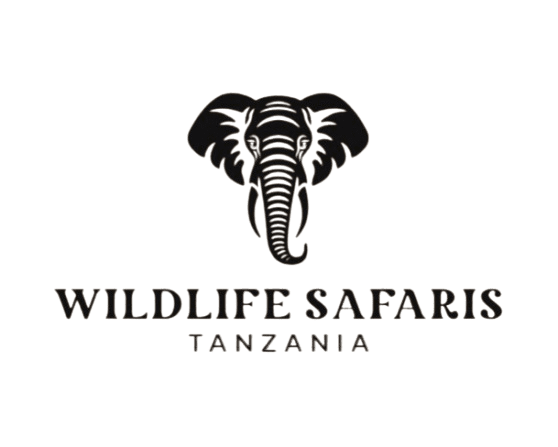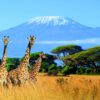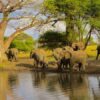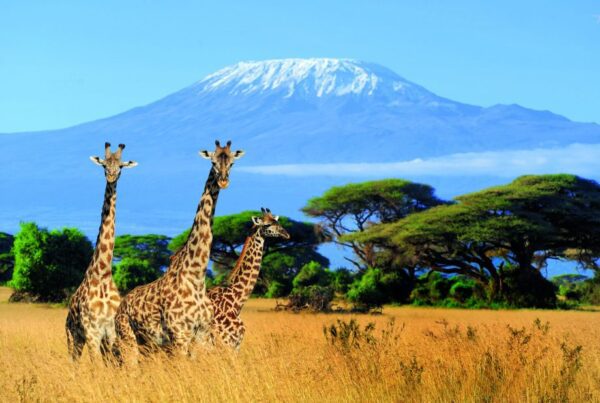Two Unvisited Areas of the Serengeti
An independent park to witness the majesty of Africa’s animal kingdom, Serengeti is truly the jewel in the crown. Indulge in all your cravings—whether it the great wonder, the wildebeest migration, or the Big Five—because we promise you won’t be disappointed. Nevertheless, this 14,763-square-kilometer park experiences a high volume of visitors, particularly during the peak months of the wildebeest migration, because to its popularity and plentiful wildlife. However, does the park as a whole receive visitors? Certainly not in every single place. During some months, the Serengeti does get very crowded, but in these two areas, it is absolutely nonexistent. Certainly, I think we should do just that.
Wildlife in the Southern Serengeti
Notable points
During the calving season (December–March), you may see the amazing variety of native animals.
Game drives in remote areas.
Ecology and fauna
This area, which is marked by kopjes, short-grass plains, and seasonal lakes, is home to a remarkable variety of animals. Plains animals such as buffalo, gazelle, zebra, and wildebeest have plenty of space to roam thanks to the expansive plains that go all the way to the Ndutu section of the Ngorongoro Conservation section. Numerous lion prides visit the sandstone outcrops. Various predators, including as jackals, leopards, cheetahs, bat-eared foxes, and spotted hyenas, call this area home.
Season for wildebeest calving
The calving season, a captivating drama of the Great Migration, takes place between December and March in the Southern Serengeti and Ndutu. Hoofed mammals, such as zebras and wildebeests, give birth to almost half a million calves in only twenty-two weeks. As predators make their way south to prey on the infants, tensions in the area rise.
Vacation Rentals
Despite its enchantment, the southern Serengeti receives surprisingly few visitors each season. Looking for potential lodging options? Trust us, we’ve got this. A small number of permanent camps and lodges dot Serengeti South due to its relative isolation. Lodge at Lake Ndutu, Sanctuary Kusini Camp, Lemala Ndutu Camp, and Mwiba Lodge are all part of this group.
Mobile camps set up shop during calving season, giving you a prime vantage point to see hundreds of thousands of calves, so you have more options for where to stay. &Beyond Serengeti Under Canvas is only one of several movable camps; others include Olakira Migration Camp, Ubuntu Migration Camp, Nyikani Migration Camp, and Ndutu Under Canvas.
Approaching the Southern Serengeti
Driving or flying will lead you to this area. Allow me to explain it to you. After landing at Kilimanjaro or Arusha Airport, take a drive across the highlands zone, passing the Ngorongoro Conservation Area, and finally reaching the Serengeti National Park’s heart through the Naabi Hill Gate. It takes over an hour and a half to drive from the Serengeti’s center to its southernmost point. To save yourself the trouble of driving, consider taking a plane to either Serengeti South Airstrip or Ndutu Airstrip.
Desert of the West
Notable points.
– Huge prides of lions. – From May to July, you may see the Grumeti River crossings.
• Expensive lodging
Ecology and fauna
The Western Serengeti is characterized by grasslands, lush woods, and riverine forests; it is also known as the Western Corridor. Elephants, giraffes, and impalas call the woods and riverine forests home, while gazelles, buffalo, zebras, wildebeests, lions, and other plains animals call the verdant grasslands their home.
Can the migration make it to the Serengeti’s western plains?
Beginning in May and continuing through July, the migration traverses the whole territory, even into the private Grumeti Reserve, which is located west of the Serengeti. Large herds of wildebeest may be seen grazing along the riverbanks. Wildebeests encounter their first challenge in late June when they congregate along the banks of the enormous Grumeti River. Get out to this area if you wish to see the Great Migration drama unspoiled by tourists. River herds are on display as they evade lions and Nile crocodiles.
Vacation Rentals
You won’t be short of lodging options, even if the area is somewhat isolated. The posh &Beyond Grumeti River Lodge is a great place to stay since it combines nature with luxury. This resort is ideal for watching local animals and the Great Migration because of its location near the Grumeti River. The Singita Grumeti Reserve is home to a number of additional five-star establishments, including the recently opened Singita Milele, the Singita Faru Faru Lodge, the Singita Sabora Tented Camp, and the Singita Sasakwa Lodge.
Reaching the Serengeti in the West
The Western Serengeti is accessible by road or via air safari. From Arusha, the most scenic journey takes you through Ngorongoro and into the heart of the Serengeti on your way west. An exciting 8 hours pass on the drive-in safari.
Grumeti Airstrip or Fort Ikoma Airstrip are two other airports that offer regular flights that can take you there. One viable alternative, particularly for visitors staying at Singita camps, is the Sasakwa Airstrip within the Singita Grumeti Reserve.
The final verdict
Everyone is talking about the Serengeti’s traffic. Traveling to these two areas will give you the opportunity to witness the wild splendor up close and personal. Nonetheless, even in densely populated areas, our guides will show you how to avoid having your animal encounter shared with a group of twenty safari vans.








